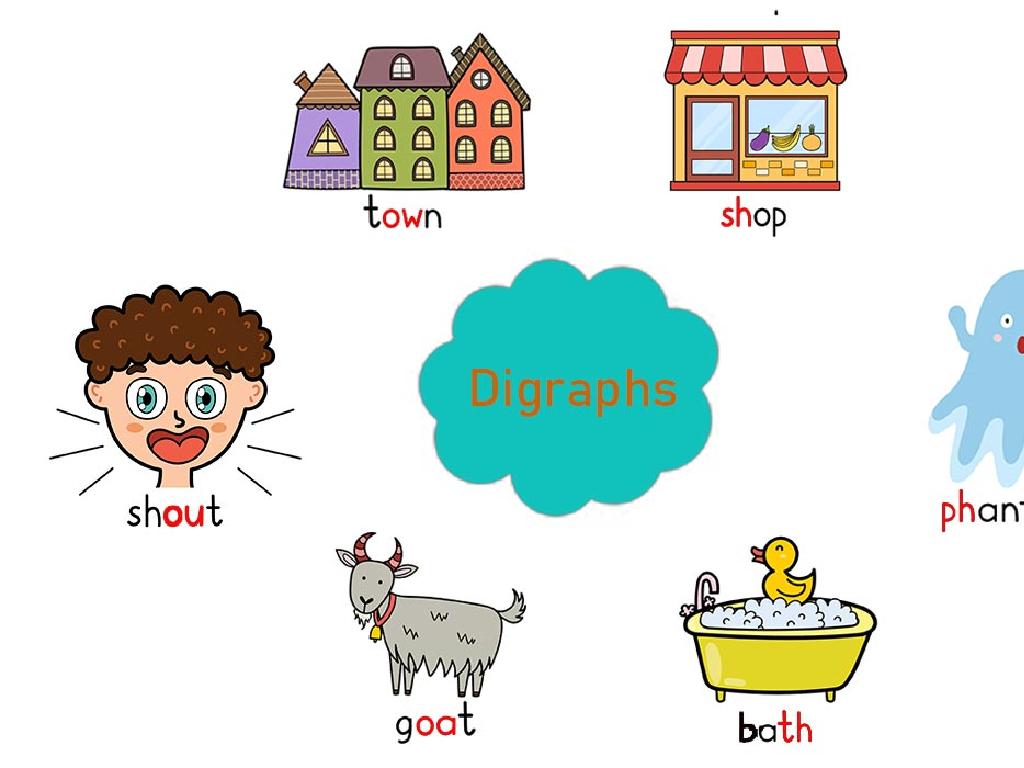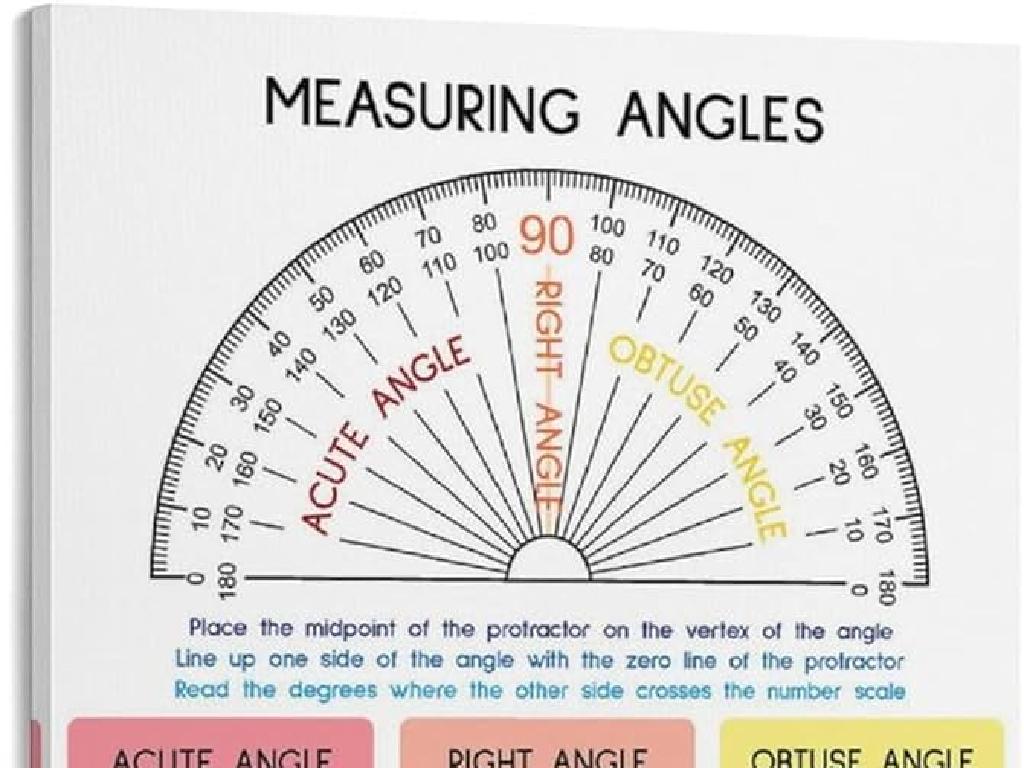Use Models To Subtract Two-Digit Numbers - With Regrouping
Subject: Math
Grade: Second grade
Topic: Subtraction Strategies: Two Digits
Please LOG IN to download the presentation. Access is available to registered users only.
View More Content
Welcome to Subtraction!
– Learn to subtract two-digit numbers
– We’ll take away one number from another, like 54 – 29
– Subtraction is useful daily
– Think about buying a toy and paying with a $20 bill
– Using models to subtract
– Draw blocks to represent tens and ones to help us see the answer
– Practice makes perfect
|
This slide introduces second graders to the concept of subtracting two-digit numbers with regrouping. Start by explaining that subtraction is taking one number away from another and is a skill used often, such as when making change after buying something. Use visual aids like base-ten blocks or drawings to represent tens and ones, which can make it easier for students to understand the process of regrouping. Encourage students to practice with different examples and reassure them that it’s okay to make mistakes as they learn. The goal is to build their confidence and proficiency in subtraction.
Understanding Subtraction with Regrouping
– Subtraction means taking away
– It shows how many are left
– Example: 5 apples – 2 eaten
– If you start with 5 and eat 2, you have 3 apples left.
– Practice with two-digit numbers
– We’ll learn to subtract numbers like 54 – 29 by regrouping.
|
This slide introduces the basic concept of subtraction to second-grade students, setting the stage for more complex operations involving two-digit numbers. Begin by explaining subtraction as the process of taking one number away from another and use relatable examples, such as having a certain number of apples and eating some, to illustrate the concept. Emphasize that subtraction helps us figure out the quantity that remains. After ensuring students understand the basic idea with single-digit numbers, transition to explaining the concept of regrouping with two-digit numbers, which will be covered in detail in subsequent lessons. Encourage students to think of real-life situations where they might need to subtract to find out how many items are left.
Subtracting Without Regrouping
– Subtract when top number is bigger
– Example: 43 – 21
– Take away 1 from 3, then 20 from 40
– Subtract ones, then tens
– Practice together in class
– We’ll do a step-by-step subtraction on the board
|
This slide introduces the concept of subtraction without regrouping, which is applicable when the top number in each place value is larger than the bottom number. Start by explaining that regrouping is not needed in such cases. Use the example 43 – 21 to illustrate this point: subtract the ones place (3 – 1) and then the tens place (40 – 20) separately. During class, engage students with a step-by-step guided practice on the board, ensuring they understand the process before moving on to regrouping. Provide additional examples and encourage students to try subtracting on their own or in small groups, offering support as needed.
When Do We Need Regrouping?
– Regrouping in subtraction
– When the ones place can’t subtract, we regroup
– Borrow from the tens place
– Take one ten and add 10 ones
– Ones place is smaller
– If 2 – 5, we can’t take 5 from 2, so we regroup
– Regrouping is like sharing
– Imagine moving cubes from one pile to another
|
This slide introduces the concept of regrouping, a key strategy in subtraction when the top number in the ones place is smaller than the bottom number. Explain that regrouping is similar to ‘borrowing’ from a neighbor; we take from the tens place to help the ones place. Use concrete examples like blocks or counters to visually demonstrate this concept. For instance, if we have 52 – 35, we can’t subtract 5 from 2 in the ones place, so we regroup by taking one ten (which is 10 ones) and adding it to the ones place. Now we have 12 ones and we can subtract easily. Encourage students to think of regrouping as sharing between the tens and ones to make subtraction possible.
Subtraction with Regrouping
– Regroup one ten into ten ones
– If we don’t have enough ones, we can break a ten apart.
– Add ten ones to the ones place
– After regrouping, we have more ones to subtract from.
– Now subtraction is easy!
– With enough ones, we can subtract without trouble.
|
This slide introduces the concept of regrouping in subtraction for second graders. Regrouping is necessary when the top number in the ones place is smaller than the bottom number. Start by explaining that if you don’t have enough ones to subtract, you can ‘borrow’ from the tens place. Show them how to take one ten and turn it into ten ones, which they then add to the ones place. This makes it possible to subtract the two numbers. Use visual aids like base-ten blocks or drawings to help students visualize the process. Practice with several examples, and ensure to walk through each step slowly, allowing students to grasp the concept of regrouping fully.
Let’s Practice Regrouping
– Start with 52 – 37
– Regroup 1 ten as 10 ones
– 5 tens and 2 ones becomes 4 tens and 12 ones
– Add to the 2 ones to make 12 ones
– 4 tens and 12 ones is our new number
– Now subtract 7 from 12
– The result is 4 tens and 5 ones, or 45
|
This slide is aimed at teaching students the concept of regrouping when subtracting two-digit numbers. Start by presenting the problem 52 – 37. Explain that we cannot subtract 7 from 2, so we need to regroup. Show them how to take one ‘ten’ from the ‘tens’ place and convert it into ’10 ones’, which we then add to the 2 ones we already have, making it 12 ones. Now, it’s possible to subtract 7 from 12. The result is 5 ones. Since we took one ten away, we now have 4 tens left. Therefore, the answer is 45. Use visual aids like blocks or drawings to help students visualize the regrouping process. Practice with more examples to reinforce the concept.
Subtracting Two-Digit Numbers with Regrouping
– Regroup before subtracting ones
– Subtract ones after regrouping
– If ones place is too small to subtract, regroup from tens
– Next, subtract the tens
– After ones, subtract tens place value
– Count carefully during subtraction
– Double-check your work by counting again
|
This slide introduces the concept of regrouping when subtracting two-digit numbers. Start by explaining that sometimes we need to ‘borrow’ from the tens place to subtract the ones. Show this process step by step, ensuring that students understand why and how we regroup. After regrouping, guide them to subtract the ones place first, followed by the tens place. Emphasize the importance of careful counting and checking work to avoid mistakes. Use visual aids like base-ten blocks or number lines to help students visualize the process. Practice with several examples and encourage students to explain their thinking.
Class Activity: Subtraction Bingo
– Play Bingo with subtraction problems
– Solve and cover the correct answer
– Use counters or markers to cover numbers
– Aim for five correct in a row
– Get ready to win and have fun!
|
This interactive class activity is designed to help second-grade students practice subtracting two-digit numbers with regrouping in a fun and engaging way. Prepare Bingo cards in advance, with answers to subtraction problems instead of numbers. Create a set of subtraction problem cards to draw from. Students will solve the problems you draw and cover the answers on their Bingo cards. The first student to cover five answers in a row horizontally, vertically, or diagonally wins the game. Possible variations of the activity could include playing in pairs, using different regrouping scenarios, or having students create their own Bingo cards with answers to problems you’ve reviewed in class. This activity reinforces mental math skills and the concept of regrouping while providing a playful learning environment.
Mastering Subtraction with Regrouping
– Congratulations on learning regrouping!
– Practice to sharpen your skills
– Try more problems to become a subtraction star
– Continue practicing at home
– Use your workbook for extra fun exercises
– Exciting new strategies ahead
|
This slide wraps up the lesson on subtracting two-digit numbers with regrouping. It’s important to praise the students for their hard work and encourage them to continue practicing to solidify their understanding. Provide them with additional worksheets or suggest pages in their math workbook that they can use for practice at home. Let them know that their efforts are building a strong foundation for future math skills. Next class, we will introduce more subtraction strategies to help them tackle different types of problems. Make sure to acknowledge every student’s progress and remind them that practice is key to mastering new concepts.






